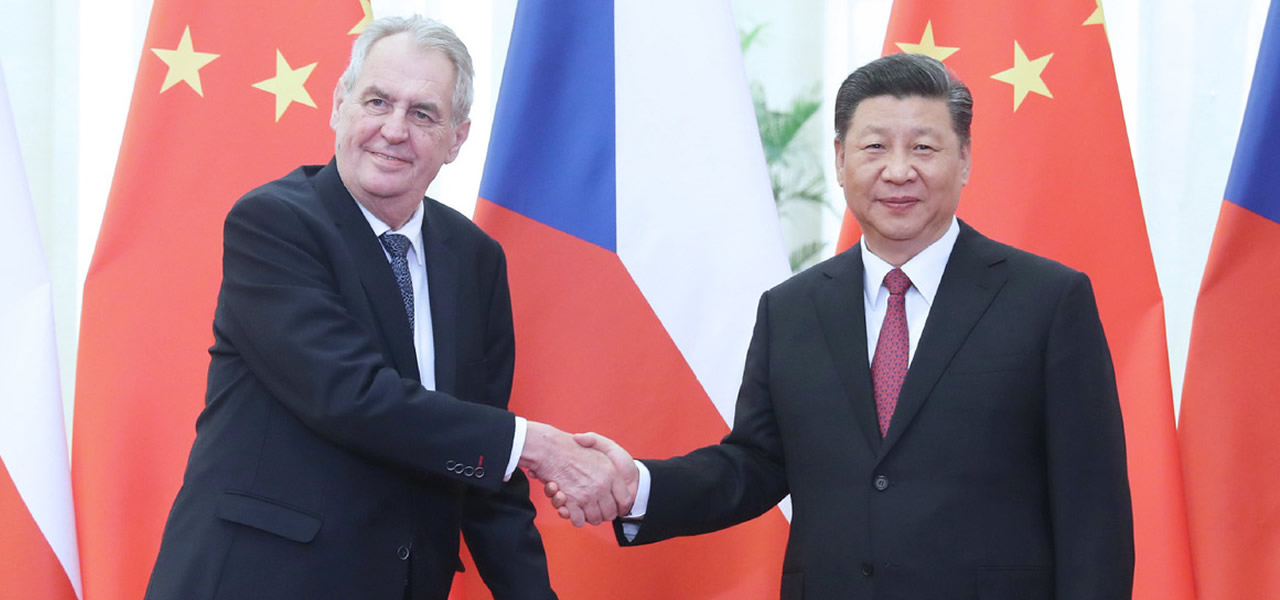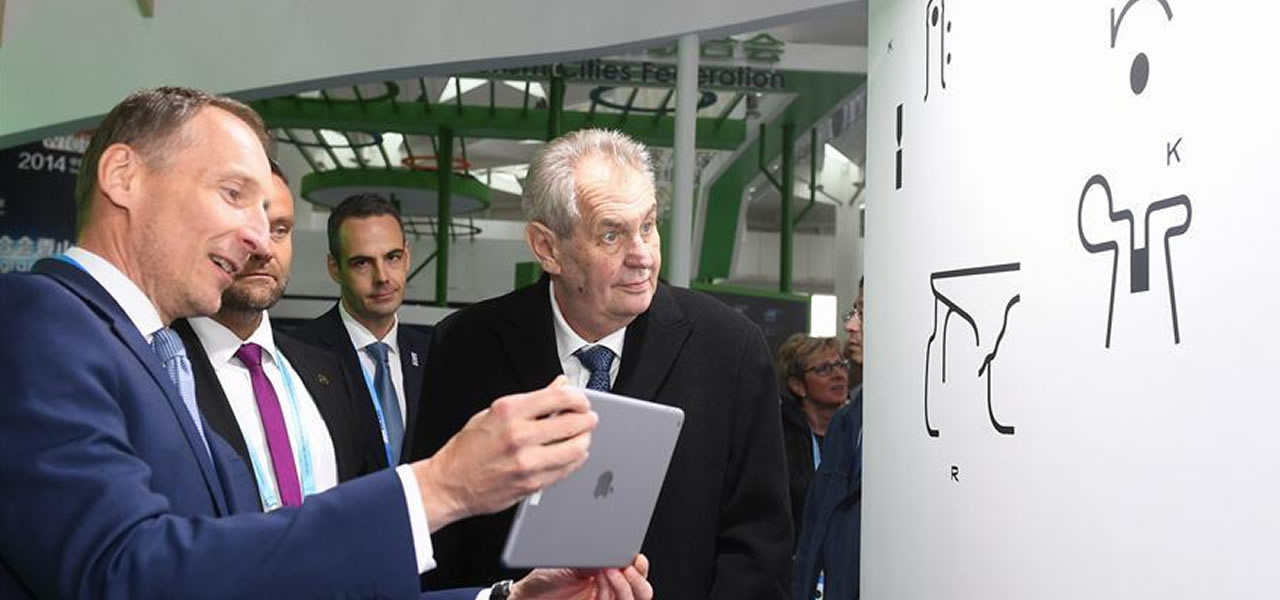President Xi Jinping meets with Czech President Milos Zeman in Beijing, April 28, 2019. [Photo/Xinhua]


President Xi Jinping meets with Czech President Milos Zeman in Beijing, April 28, 2019. [Photo/Xinhua]

Czech President Milos Zeman visits the Czech Republic booth at the International Pavilion of the International Horticultural Exhibition 2019 Beijing, in Beijing, April 28, 2019. [Photo/Xinhua]

China Esteran Airlines
In recent years, we have noticed that the Sustainable Apparel Coalition (SAC) has released the Higg Material Sustainability Index (Higg MSI). However, the one-sidedness and inaccuracy of the index on the environmental impact of silk have created considerable confusion and consternation among the global silk fraternity. This may create cascading effect on the livelihood opportunities to millions of stakeholders in the rural areas and producing mills all across the globe.
With a view to reflect the carbon neutrality and sustainability of silk products in a more comprehensive and objective manner, International Silk Union (ISU) joined hands with several organizations, such as International Sericultural Commission (ISC), Ufficio Italiano Seta (UIS), INTERSOIE France and Brazilian Silk Association (ABRASEDA), to table the following proposal:
Ⅰ. To question the method of developing Higg MSI scoring on silk
Higg MSI arrived the environmental impact value of silk as 1086, which is more than 30 times worse than synthetic fabric. The irrationality of its scoring was mainly manifested on the following aspects:
1. Higg MSI’s assessment of the life cycle of silk only stays at the stage from sericulture to fabric (that is, from “cradle to gate”). Refer to the international standards of ISO 14020:2000 Environmental labels and declarations-General principles and ISO 14040:2006 ISO 14040:2006 Environmental management — Life cycle assessment — Principles and framework, the life cycle assessment of silk products should be a research type from “cradle to grave”, which covers the production, use and disposal of silk ready to wear, silk apparels and silk home textiles. Silk is the “queen of fibers”, and its manufactured goods had a long service life and were eventually biodegradable. Therefore, the research from “cradle to grave” is more convincing, complete and scientific.
2. The evaluation indicators of Higg MSI only included “global warming potential”, “nutrient pollution in water / eutrophication”, “water scarcity”, “fossil fuel depletion” and “chemistry”. It should be added to comprehensively evaluate the environmental performance according to the Product Environmental Footprint Category Rules Guidance (PEFCR).
3. As manifested by relevant data, Higg MSI’s scoring data of silk originated from a paper called Life Cycle Assessment of Indian Silk published by Miguel F. Astudillo et al. on the Journal of Cleaner Production. The data in this paper were collected early than 2013, lack of timeliness, and using the data from individual countries or regions to evaluate the environmental impact of silk is not representative and comprehensive. It is understood that the research was carried out for a completely different purpose, not for the Higg Index.
4. Higg MSI didn’t and still does not make public its calculation method and is free from social supervision. The silk producers made nothing of the results and cannot trace their origins. By and by, the consumers’ negative perception on silk are being intensified and the producers’ confidence also severely blown.
II. To make a comprehensive and objective assessment of life cycle of silk products
In 2015, nearly 200 countries jointly adopted the Paris Agreement at the United Nations Climate Change Conference in Paris. Many countries have enacted low-carbon development strategies in succession. In 2020, China set out the goal of “achieve peak CO2 emissions before 2030 and carbon neutrality before 2060”. Britain boosted the reduction of greenhouse gas using two approaches, restriction and incentive, and identified low-carbon electricity as the core of low-carbon development. By formulating the National Programme for the Mitigation of Climate Change, France clearly defined the selecting and formulating principles of emission reduction measures.
It is a joint duty and commitment of the countries, silk academia, business circles and consumers to respond to the global low-carbon development strategies and facilitate the healthy development of silk industry. The international silk industry requires an open, comprehensive and objective assessment system for the life cycle of silk products, to steer the production and consumption of silk industry.
1. It is necessary and impelling to determine the boundaries of the assessment system which confirms to the current production and consumption of silk according to relevant international standards, as well as evaluate its environmental performance in the whole life cycle from sericulture, production, design, use, re-use, up cycling and disposal of silk products. The evaluated sustainability scores are validated by ISO and provided for public use and interpretation.
2. The evaluation sample should be comprehensive, representative and accurate. It should include major silk producing countries such as China, India and Uzbekistan, as well as silk manufacturers and consumers in Europe and the United States, involving the key links of silk production such as silk reeling, twisting, weaving, printing and dyeing, truly reflect the production technology and production conditions of the international silk industry, and the consumer behavior and consumption habits.
3. It is a compelling duty to divide the industrial chain in a rational way, make a comprehensive, deep and transparent as well as really traceable inventory analysis on each stage and gradually improve the life cycle assessment of silk products, so that a more open and transparent evaluation system that withstands the test of practice can be widely used applied the silk industry, and raise the awareness of environmental responsibility of the silk industry.
4. To actively seek policy support, fully exert the linkage between trade organizations and enterprises, allow high-quality and time-sensitive industrial data to be applied to the assessment system and objectively reflect the environmental performance of silk products. Promote market-oriented green technological innovation, standardize LCA research in the global silk industry, formulate Silk Product Category Rules (PCR), industry standards and sustainability indexes, guiding silk enterprises to green production.
5. Last but not least silk needs all of us to take the initiative to cultivate consumers’ green values and green spending habits, and give full value to the publicity function of the media platform, so that consumers can fully understand carbon neutrality, sustainability and ecological environment protection, and create a demand engine for the development of green silk industry.
Plan energy resources as a whole and advocate greenness and low carbon. We are liable to co-build a green home for silk. Industry organizations, enterprises and brands of International silk should pool efforts, seek common development, propel the comprehensive and objective assessment of the life cycle of silk products, and guarantee the healthy and sustainable development of the silk industry.